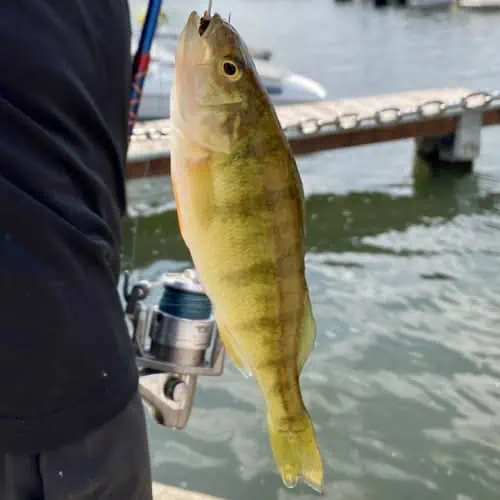
There is only one valid walleye species, Sander vitreus, but the genus Sander contains five total species. This genus belongs to the family Percidae, which includes the pikeperches and well-known sportfish fish like the yellow perch (Perca flavescens). Pikeperches typically have elongated bodies with a greenish-gray to yellowish-brown coloration. They usually have a series of dark vertical stripes along their sides, which can vary in intensity among species.
Walleyes and their close relatives are primarily found in freshwater or brackish water bodies, including lakes, rivers, reservoirs, and ponds. They prefer habitats with clear water and moderate vegetation because they are ambush predators that rely on their excellent camouflage to capture prey.
The diet of the pikeperch includes smaller fish, crustaceans, and the occasional opportunistic small mammal, bird, or lizard. Their sharp teeth and large eyes help them hunt these prey items.
Most species in the Sander genus are excellent sportfish and make great table fare. Additionally, these species readily hybridize with each other.
1) Walleye (Sander vitreus)
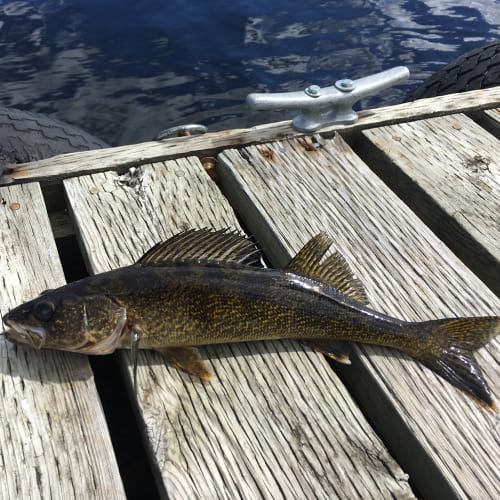
Also known as pickerel, walleye are popular sportfish in North America with a native range that extends throughout the United States and Canada except on the West Coast, where it is introduced. Walleye are sought after by anglers because of their energy when hooked, their large size, and their table fare. A walleye averages 12 to 17 inches (30 to 43 cm) but they can exceed 40 inches (102 cm) and weigh over 25 lbs (11 kg). They look similar to the sauger, but a defining characteristic of this species is the last 2 – 3 spines on the anterior dorsal fin, which possess a black spot.
Like other pikeperches, the walleye is found in clear to slightly turbid waters and is often associated with structures such as rocks, submerged logs, and weed beds, where they can ambush their prey. Walleyes typically spawn in the spring, when water temperatures rise toward the end of the season. They congregate in spawning regions and lay adhesive eggs on rocks, gravel, or other submerged substrates in areas with moderate water currents. After hatching, the current carries the larvae downstream until they mature enough to inhabit shoreline habitats.
Walleye populations are generally considered stable and are of least concern, according to the IUCN.
2) Sauger (Sander canadensis)
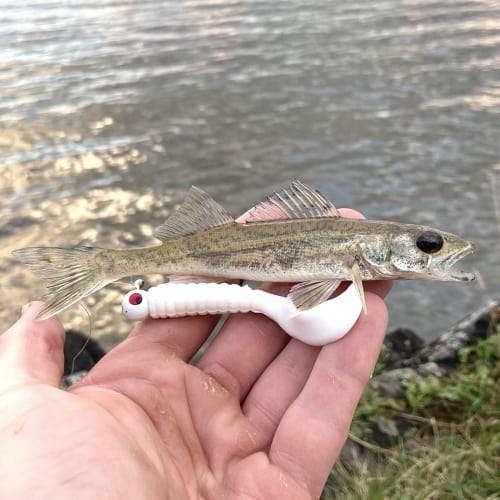
The ranges of the walleye and sauger overlap, so it is essential to distinguish the two species while angling. When identifying sauger and walleye, first consider your location. Saugers are generally found in a more limited range than walleye. Saugers are more common in the central and eastern United States and parts of Canada, whereas walleye have a broader distribution across North America. The sauger also has more spots on the dorsal fin than the walleye. Finally, examine the mouth: walleyes have a larger and more pronounced mouth, while saugers have a smaller mouth.
While both species are sought-after, sportfish saugers are typically smaller than walleyes and are less desirable. They commonly reach lengths of 12 to 15 inches (30 to 38 cm), although more prominent individuals can sometimes be found. Like walleye, saugers are carnivorous and feed on other fish species, aquatic insects, and small prey. They are known for their nocturnal feeding habits and often become more active during low-light conditions.
3) Zander (Sander lucioperca)
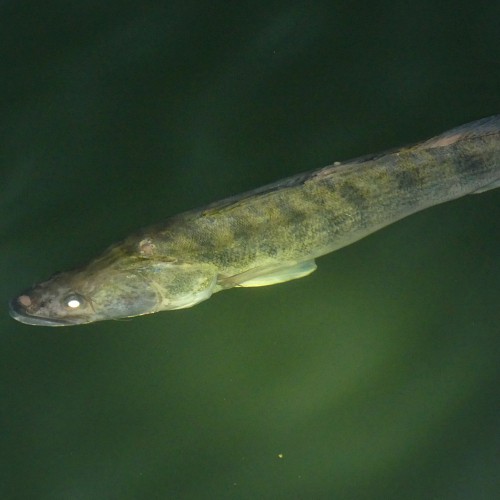
Three species of pikeperch in Europe diverged from their North American cousins over 20 million years ago. The first is the zander, another significant predatory fish characteristic of the Sander genus. Zander have an elongated and cylindrical body with a coloration that varies depending on their habitat. Typically, they have a greenish to yellowish-gray back, a silvery-white belly, and a series of dark, vertical stripes along their sides. These stripes resemble the markings found on perch and walleye, and they are more prominent in younger zander. Zander can grow to be quite large, with individuals commonly reaching 20 inches (51 cm).
Zander are more active during low-light conditions, particularly at dawn and dusk. They are ambush predators, patiently waiting for unsuspecting prey to swim by before striking with a sudden burst of speed. During the spring, females lay between 200 and 500 thousand adhesive eggs on submerged vegetation or other suitable substrates. Males fertilize and guard the eggs, and after hatching, the young zander initially feed on zooplankton and small invertebrates before transitioning to a fish-based diet.
While the zander is not native to North America, this Sander species was introduced to the United States in the 1980s. It is believed there is a sustained population in North Dakota.
The zander is classified as least concern by the IUCN.
4) Volga pikeperch (Sander volgensis)
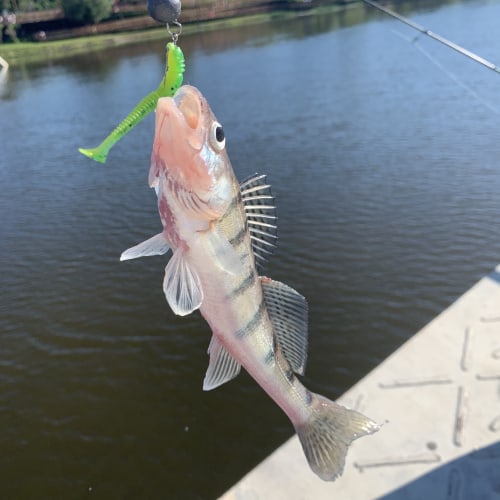
The final Sander species, the Volga pikeperch, possesses 6 – 7 vertical stripes that are distinctly triangular. Their bodies are colored greenish-blue or olive-brown back, lighter sides, and with a white belly. Volga pikeperch can vary in size but can reach lengths of up to 16 inches (41 cm).
As its name suggests, the Volga pikeperch is found primarily in freshwater habitats within the Volga River and its tributaries in Russia. They prefer slow-moving or still waters like lakes, ponds, and backwaters with ample vegetation and cover. Like other pikeperch species, Sander volgensis is a carnivorous predator. It feeds on a diet of smaller fish, crustaceans, and aquatic insects. Volga pikeperch reproduce by laying adhesive eggs in vegetation during the spring. Unlike other pikeperches, which leave their eggs to fend for themselves, the eggs are guarded and protected by the male fish until they hatch.
While the Volga pikeperch suffers from habitat degradation, pollution, and overfishing in some areas, it is classified as least concern by the IUCN.
5) Alaska pollock (Gadus chalcogrammus)
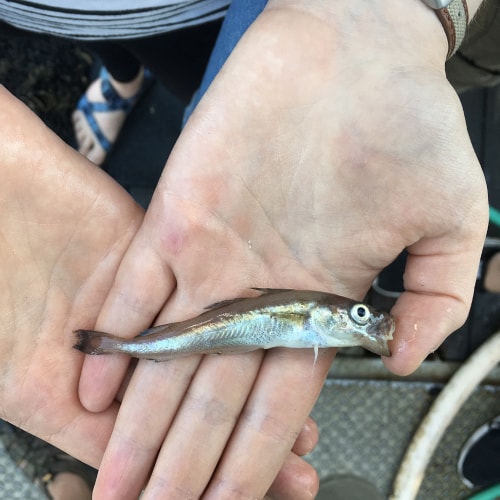
The distantly related Alaska pollock, sometimes called the walleye pollock, can be confused with the walleye. However, these species are far from related, and the term “walleye pollock” is uncommonly used. The Alaska pollock is a cold-water ocean-faring fish species native to the North Pacific Ocean. They are typically found in large schools in the North Pacific, especially in the Bering Sea and the Gulf of Alaska, where they feed on small fish and plankton.
Alaska pollock is one of the most commercially important fish species globally and is commonly used for a wide range of seafood products, including surimi, fish sticks, and imitation crab meat. Due to the versatility of this species, the Alaska pollock is one of the largest fisheries in the world. Sustainable management practices ensure that this species will persist for generations to come.
6) Estuarine perch (Sander marinus)
An oddity among pikeperches, the estuarine perch predominantly inhabits brackish water and is not found in freshwater ecosystems. It tolerates a small range of salinities and, therefore, has a more restricted range than freshwater pikeperches. This species is poorly studied, although its hunting tactics and diet are likely similar to other pikeperches in this list.
Despite the lack of knowledge surrounding this species, it is not of conservation concern.

